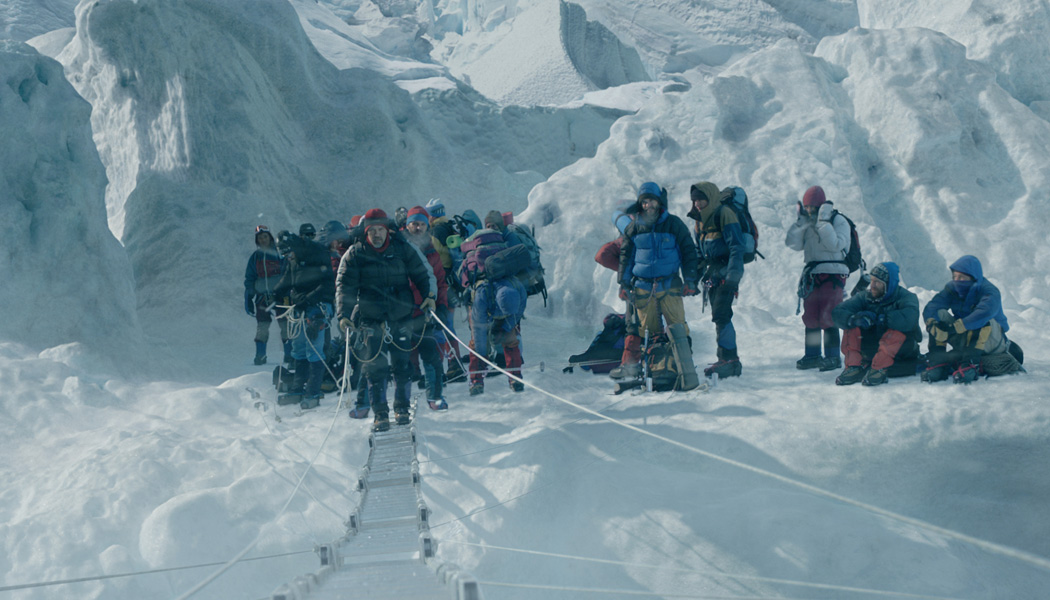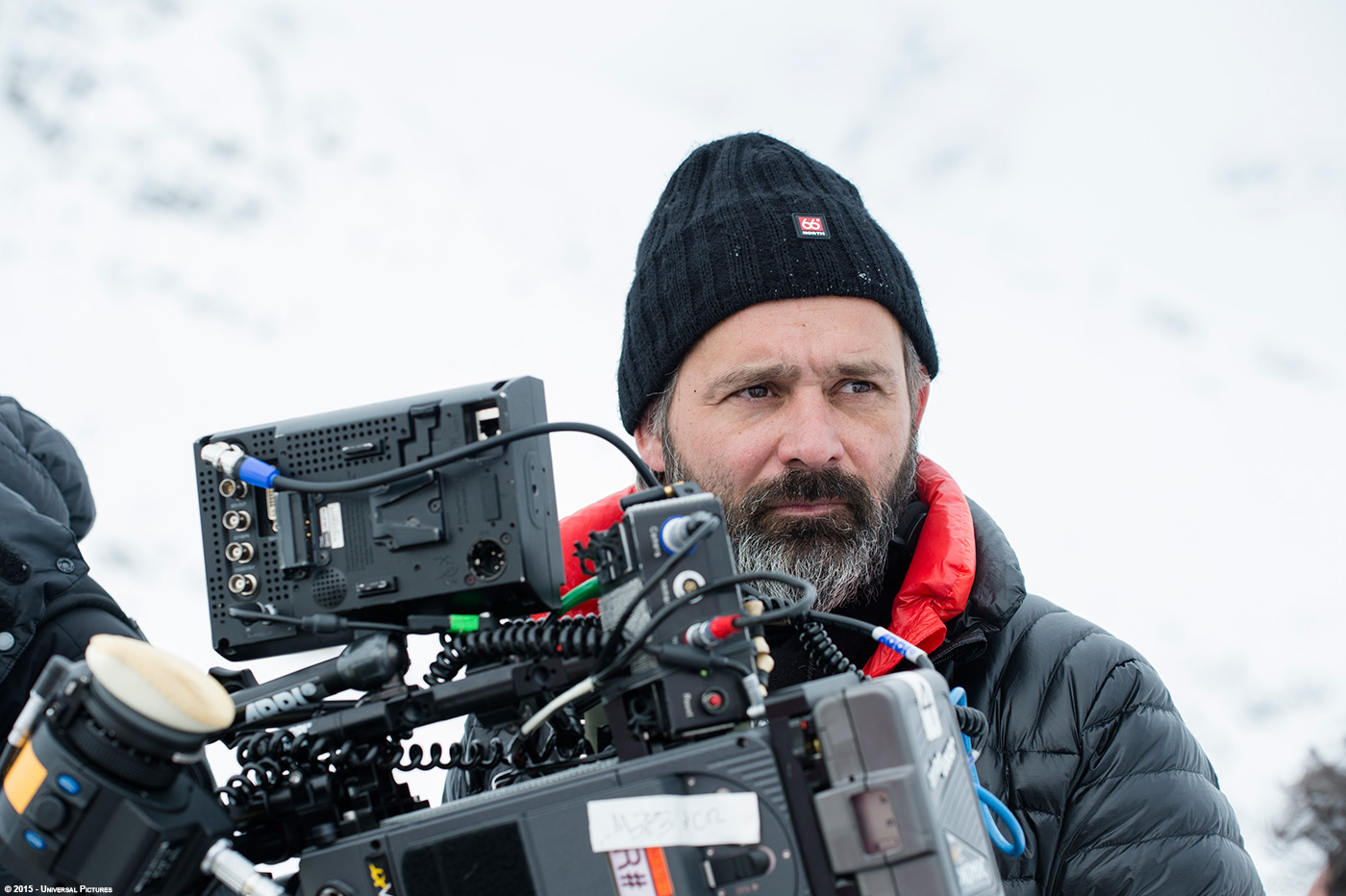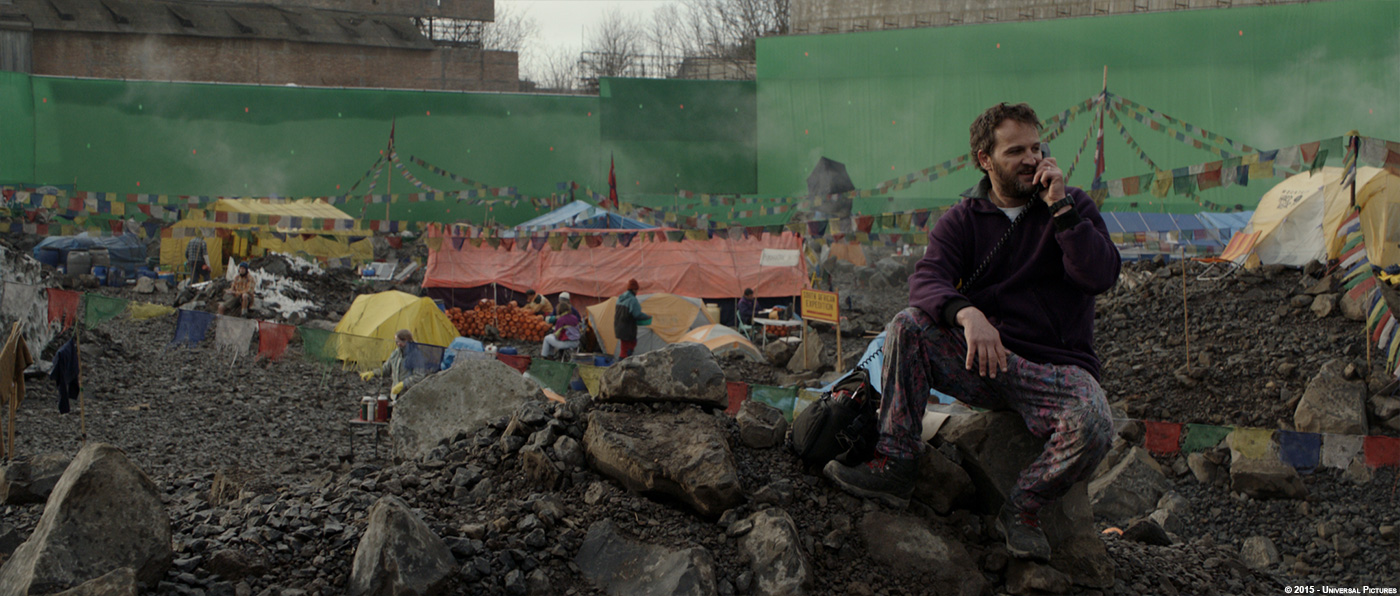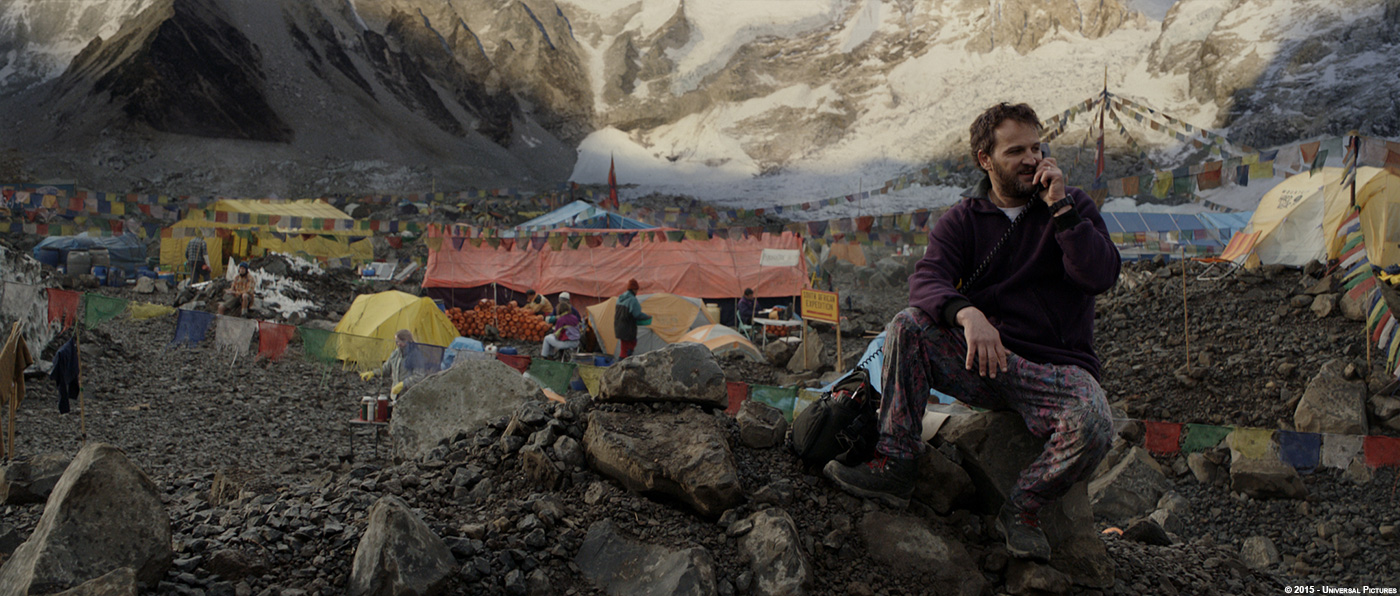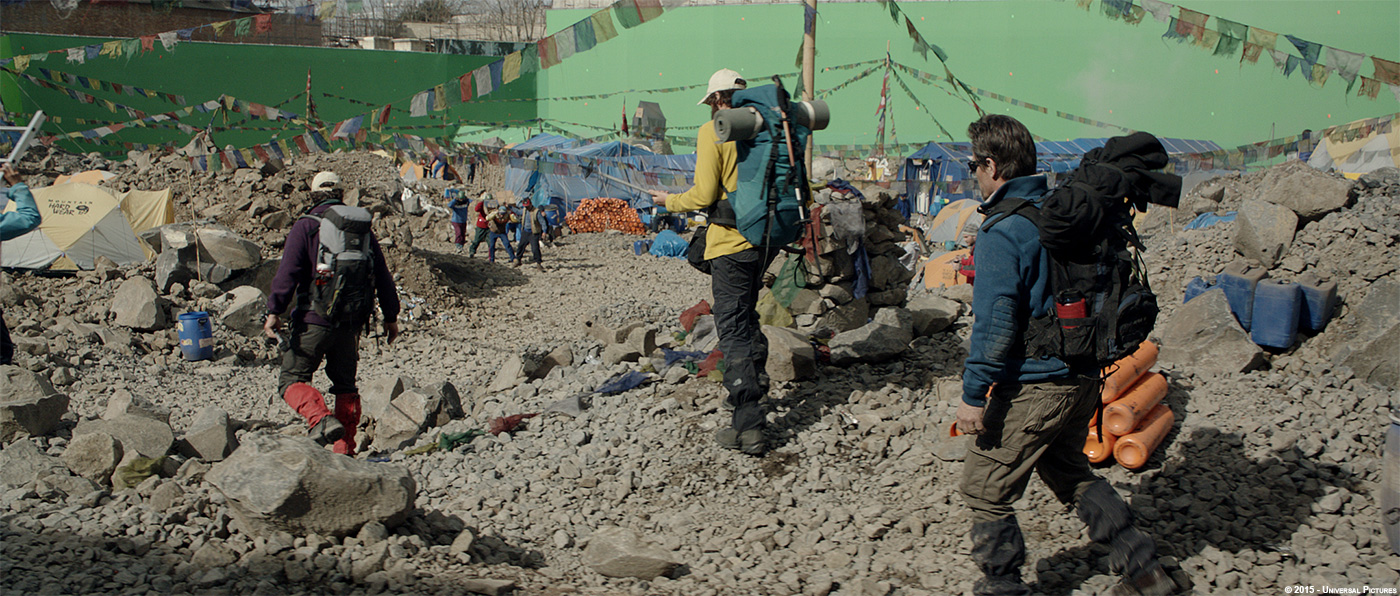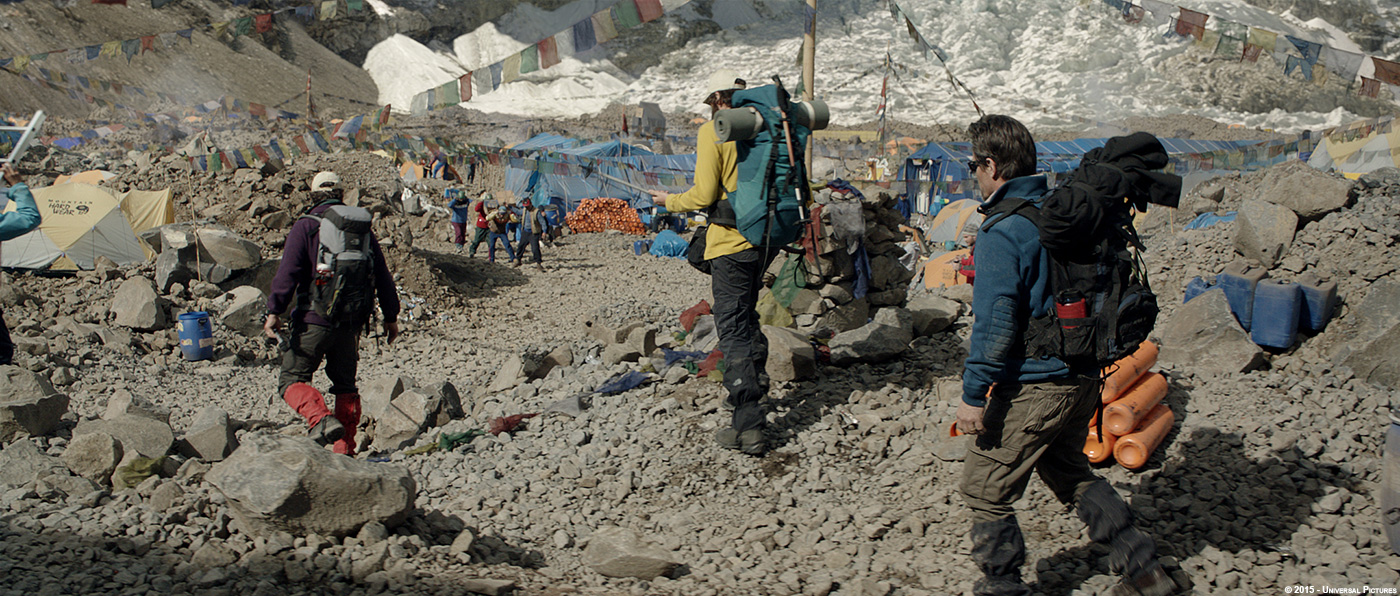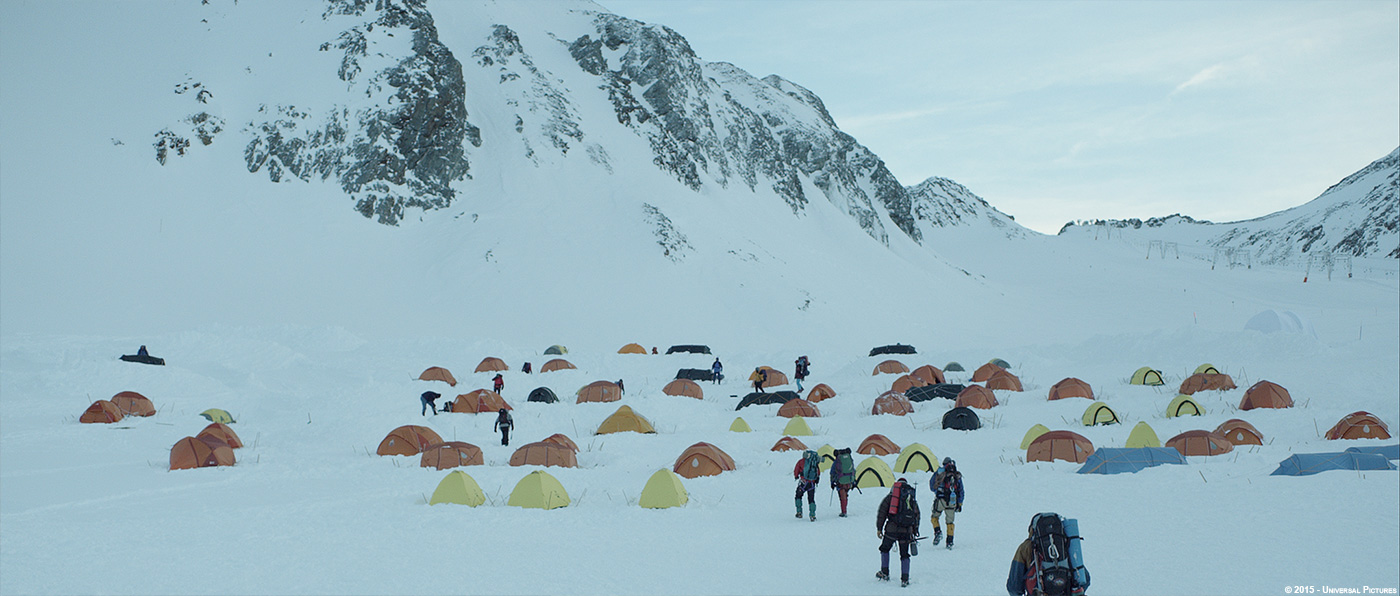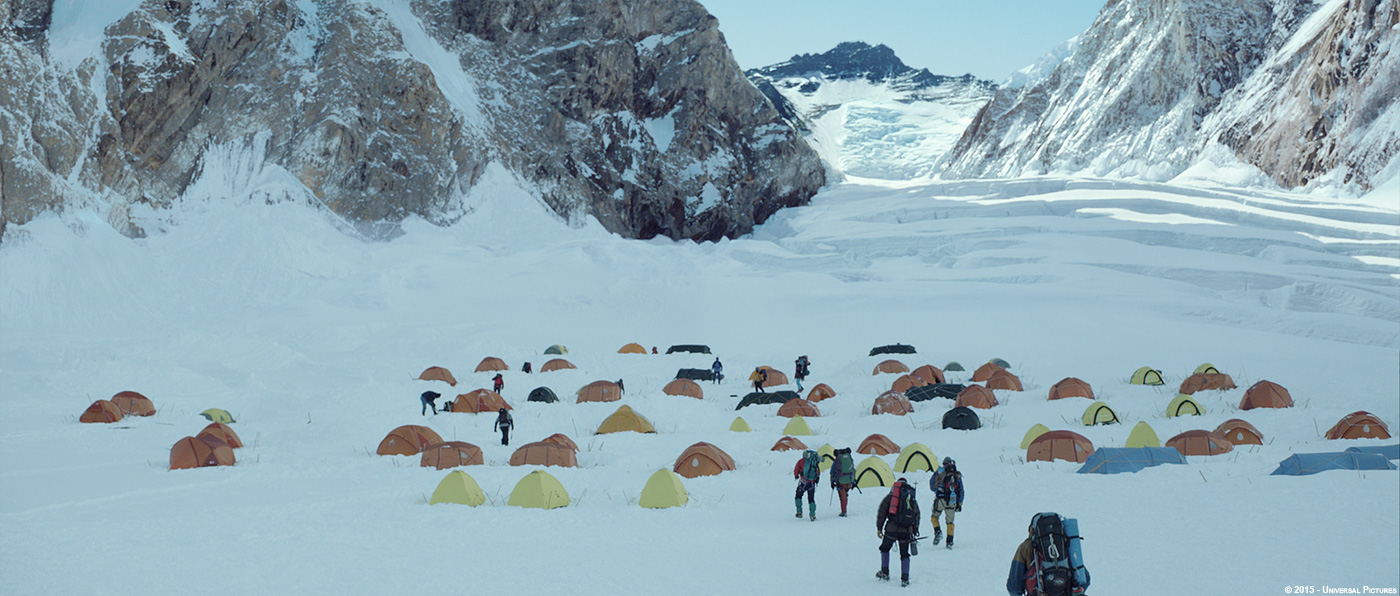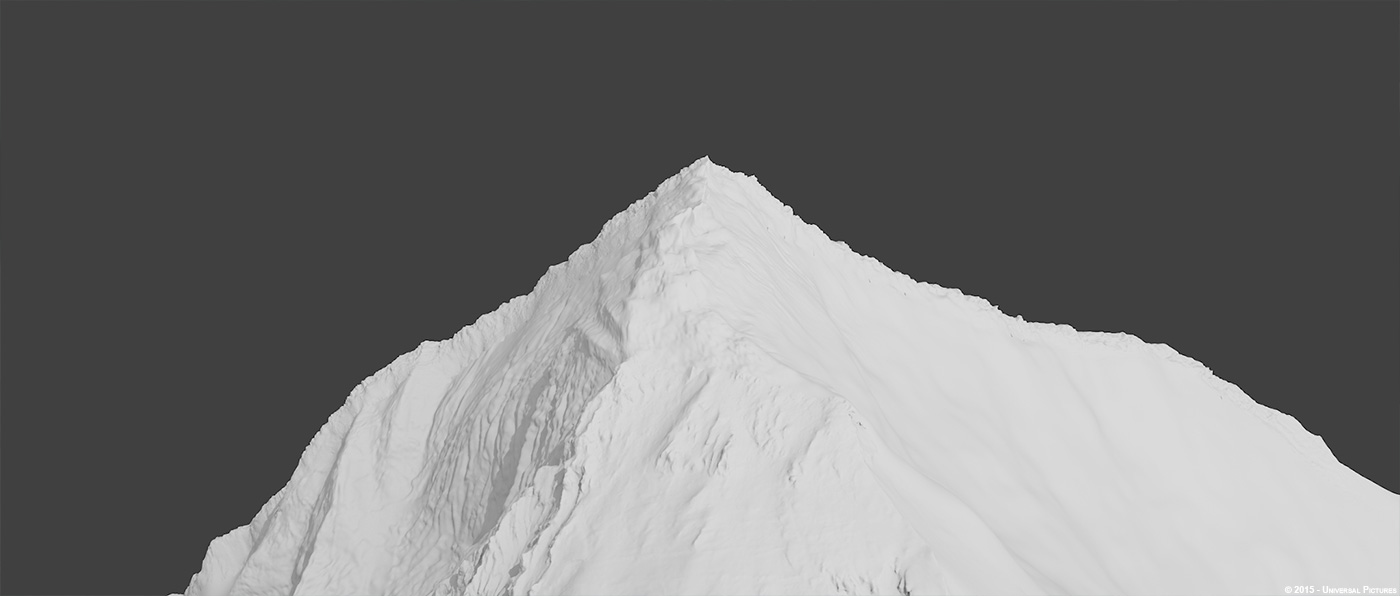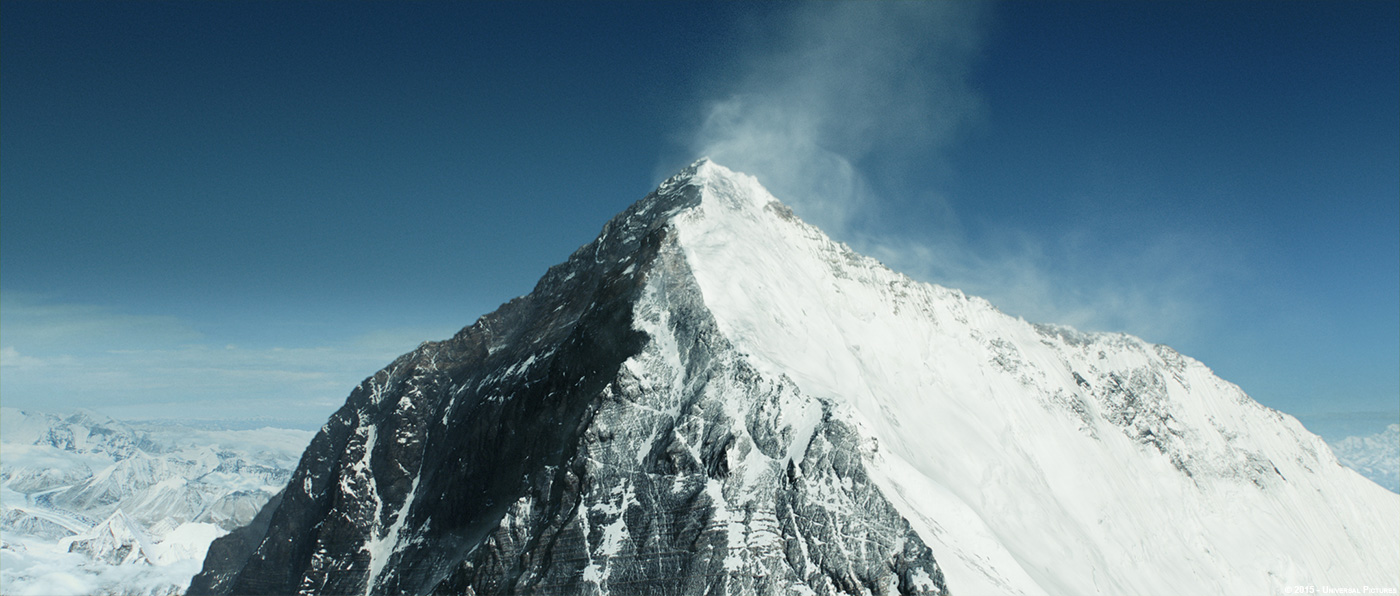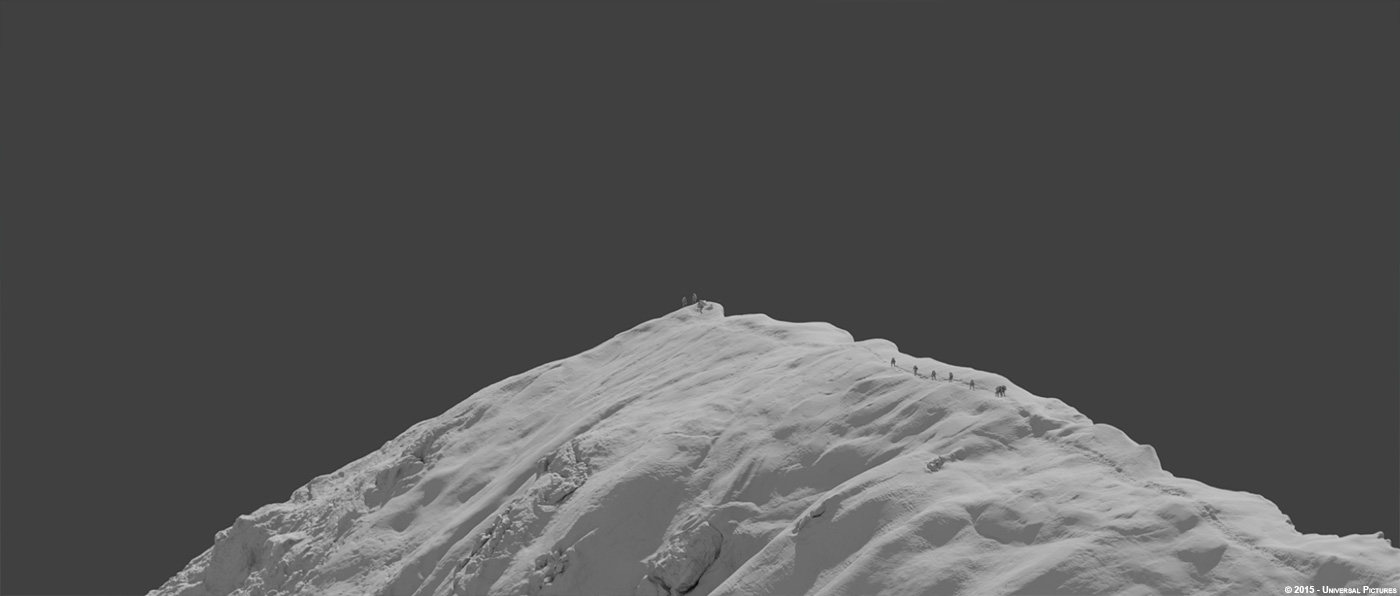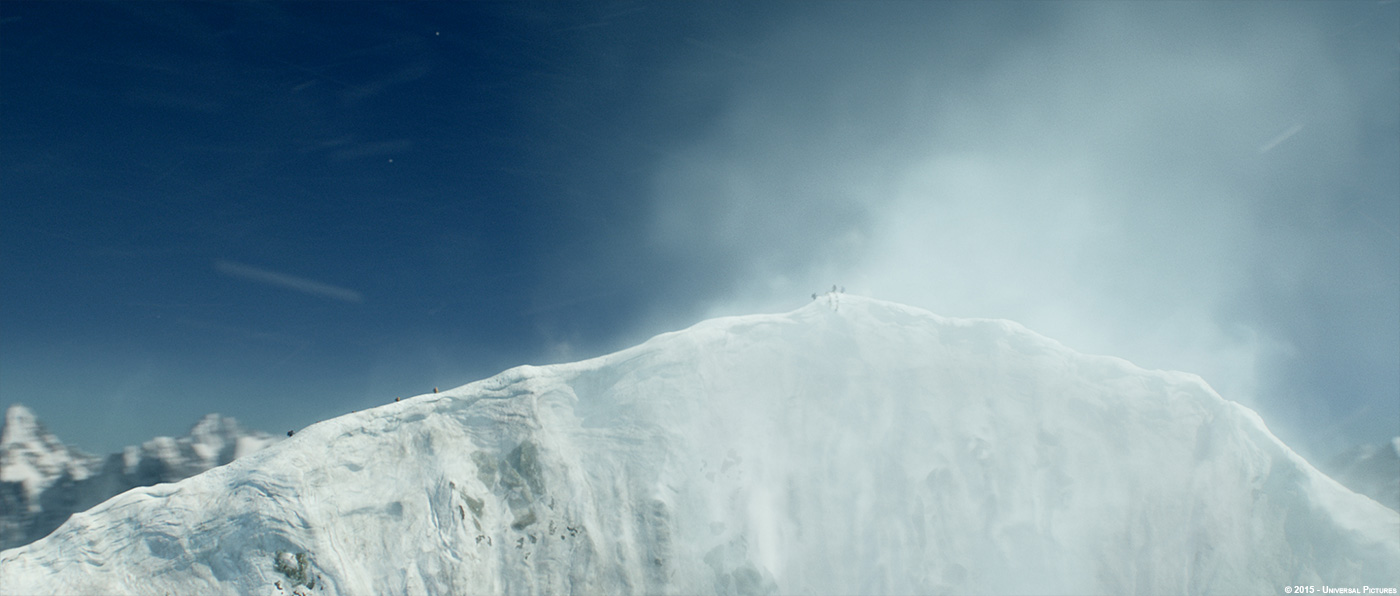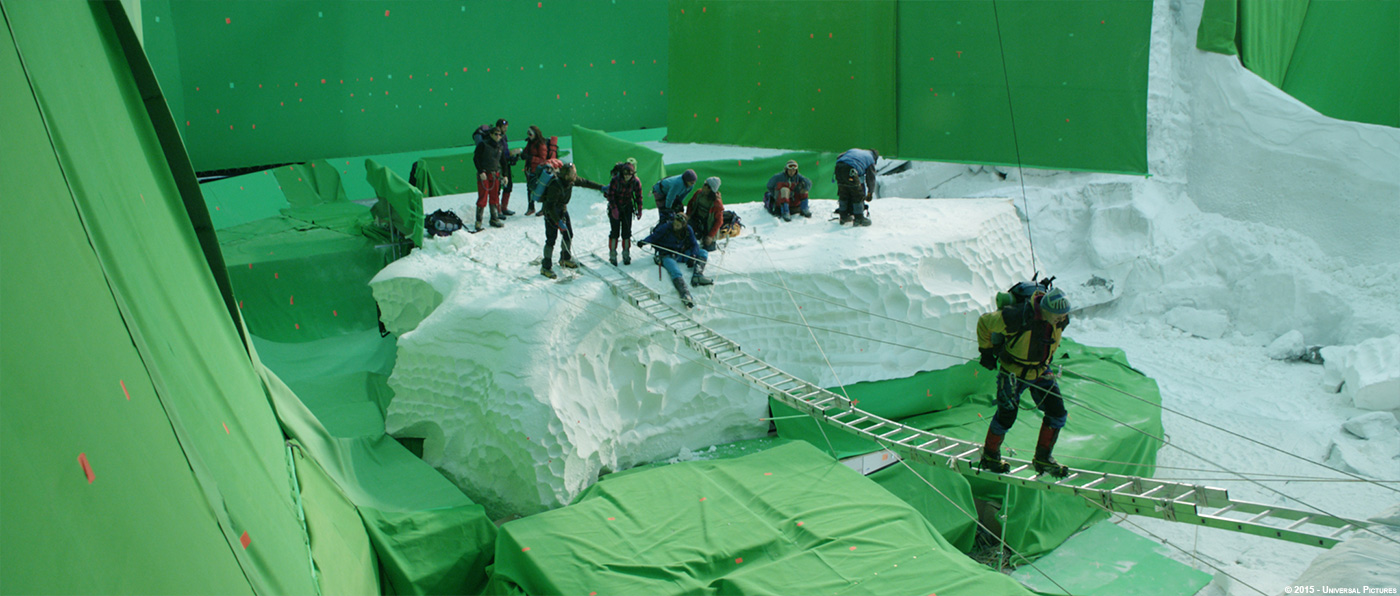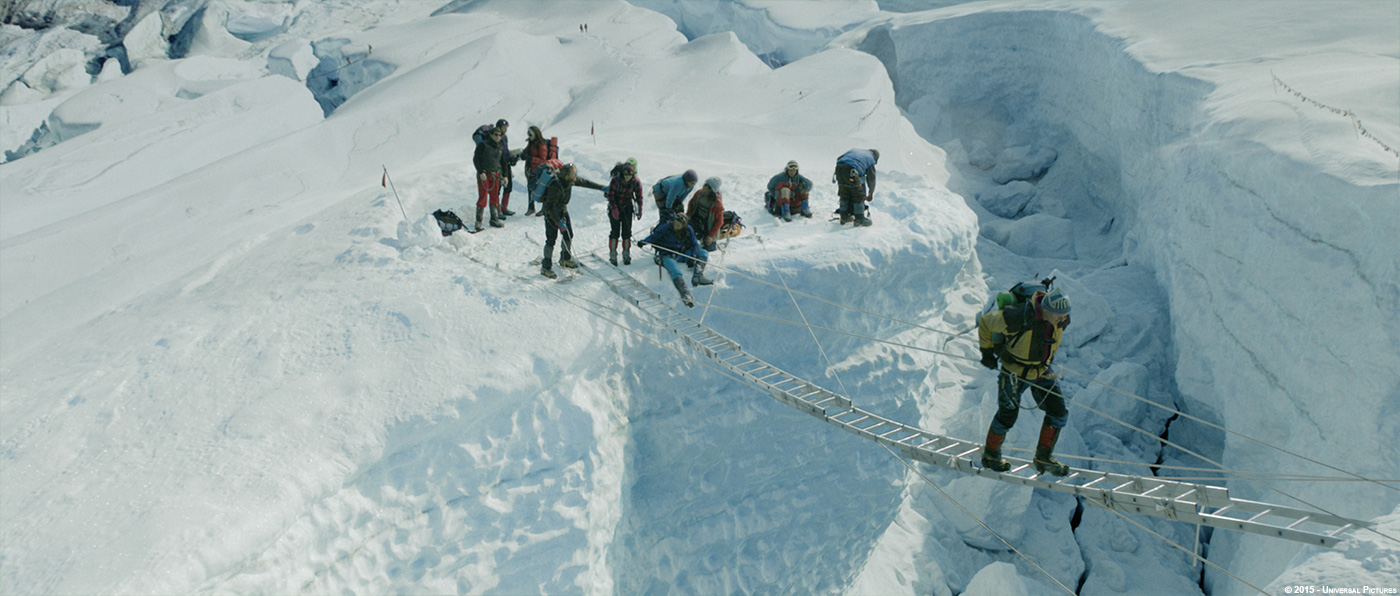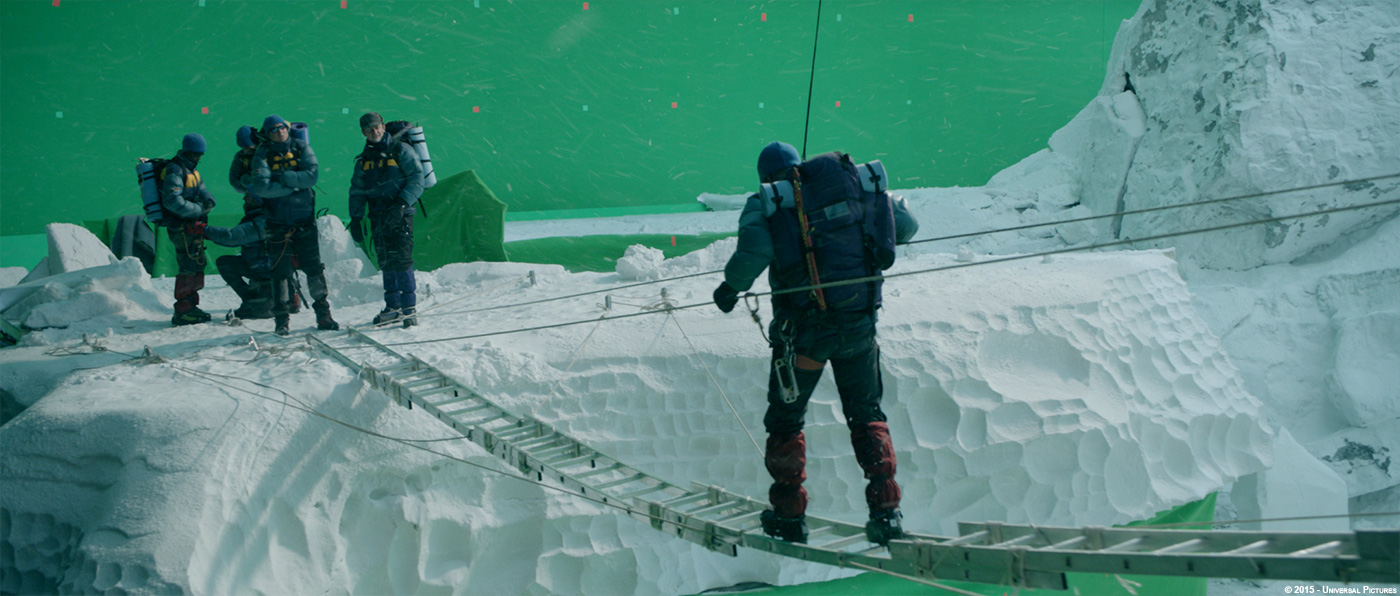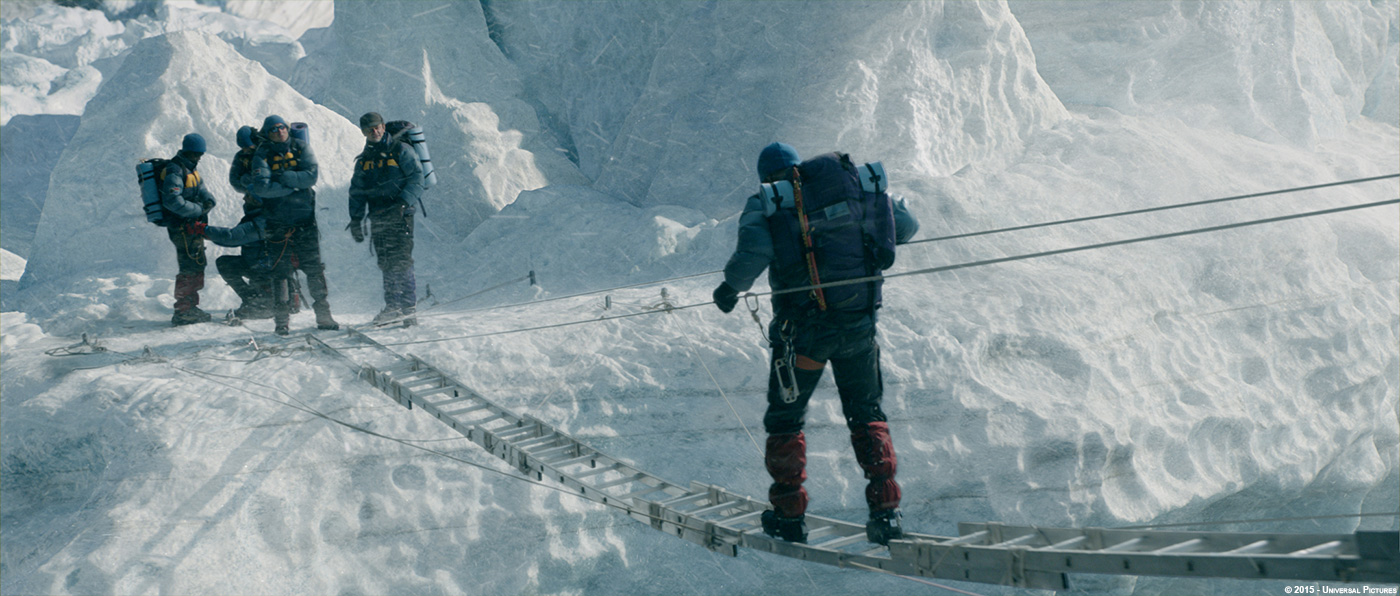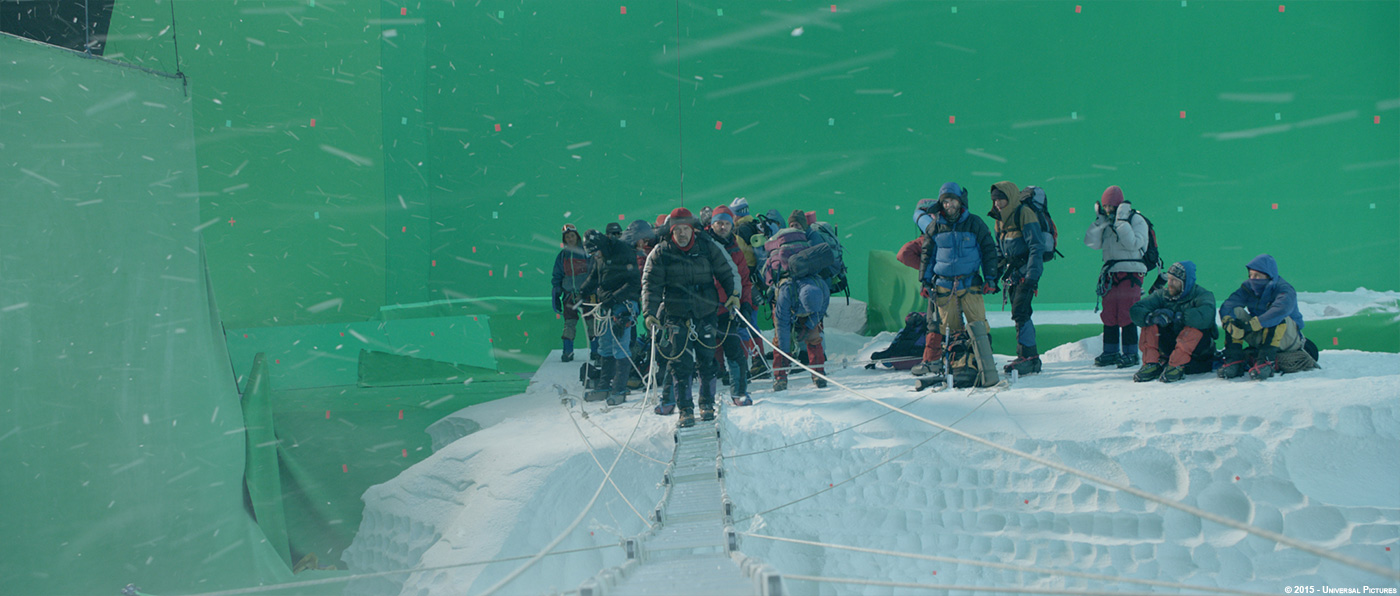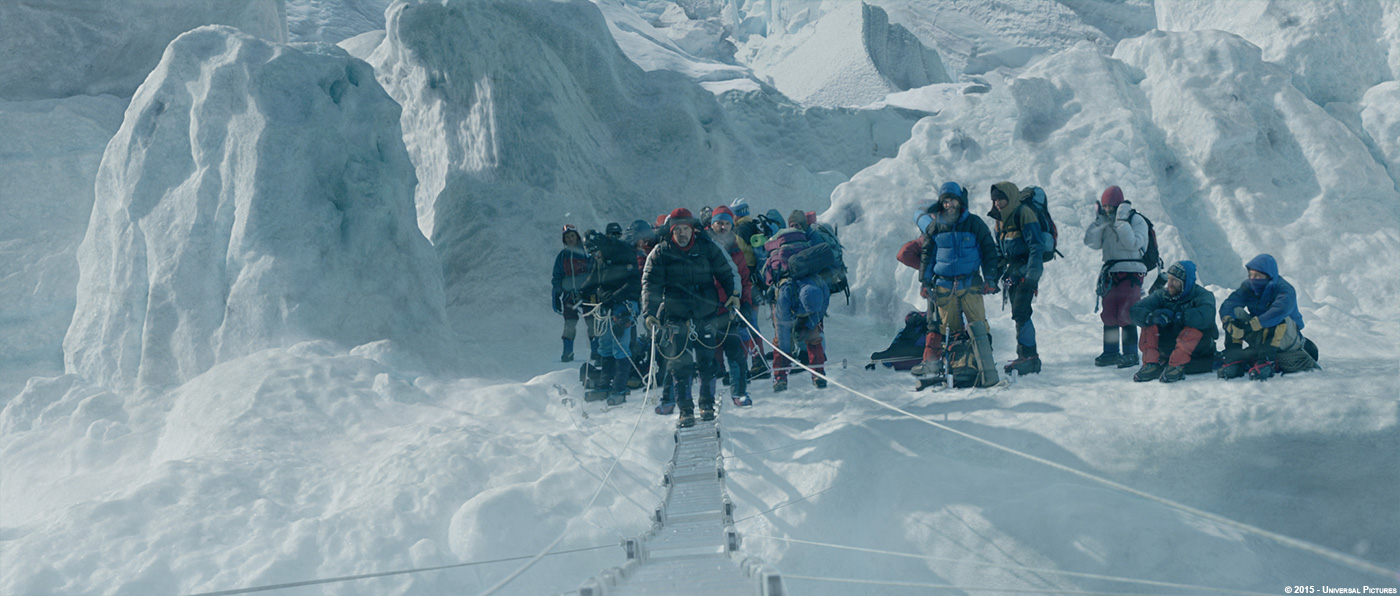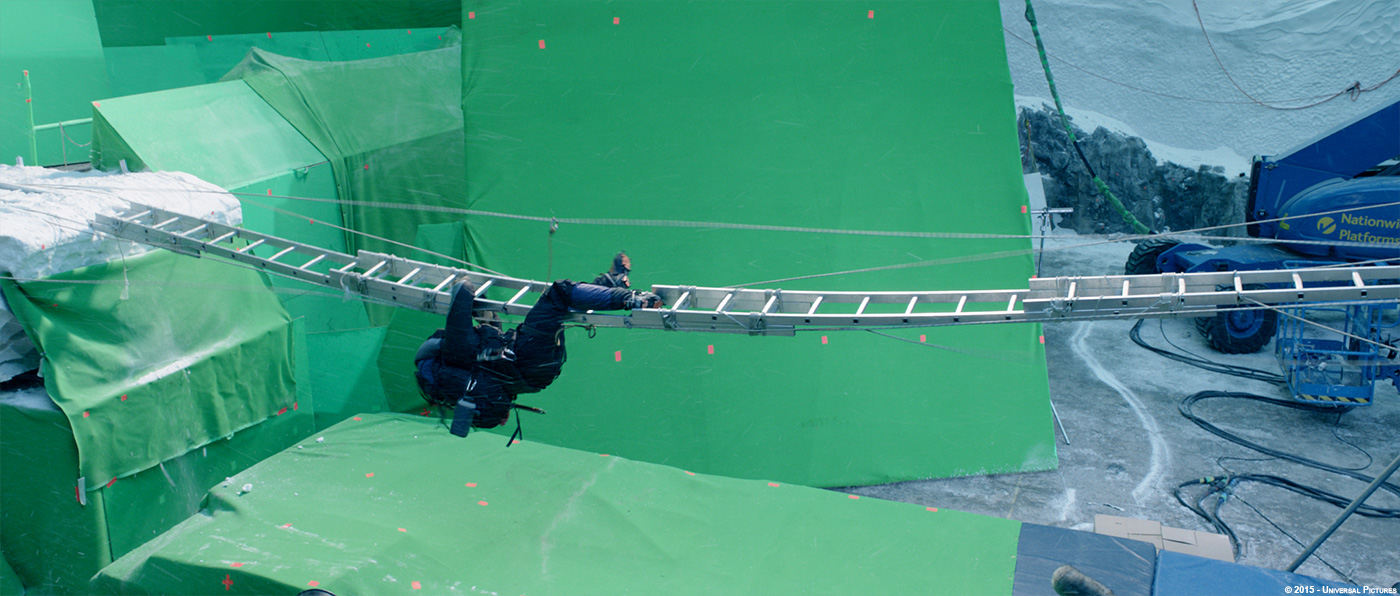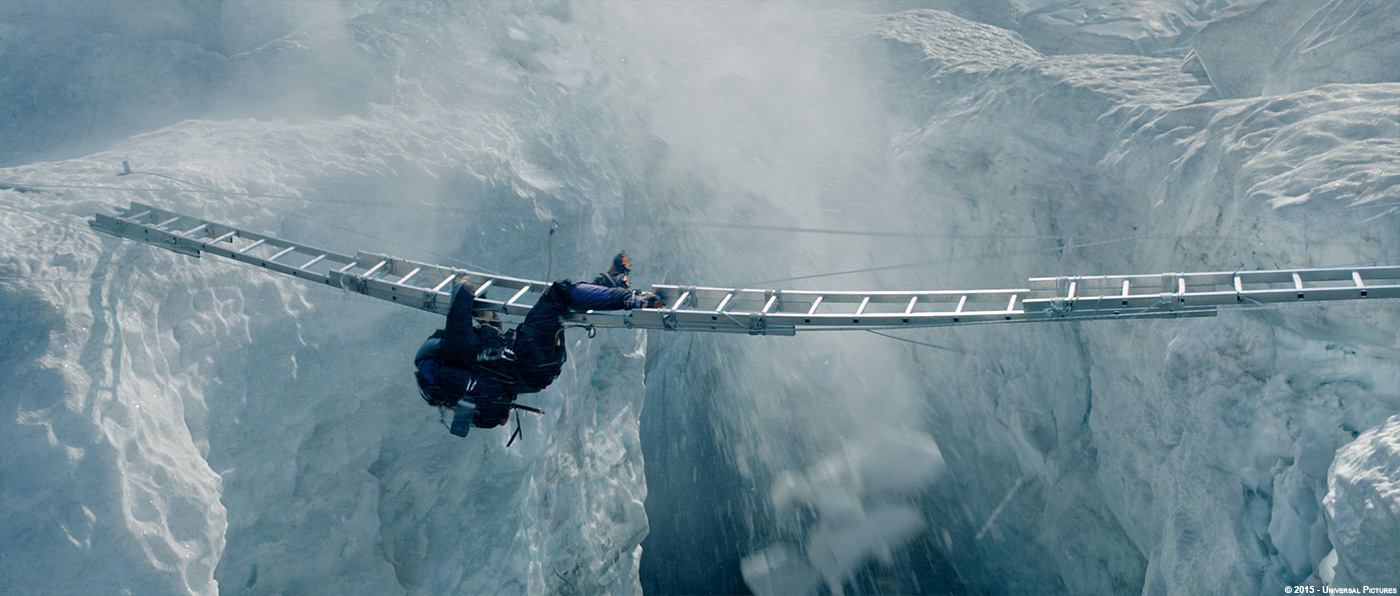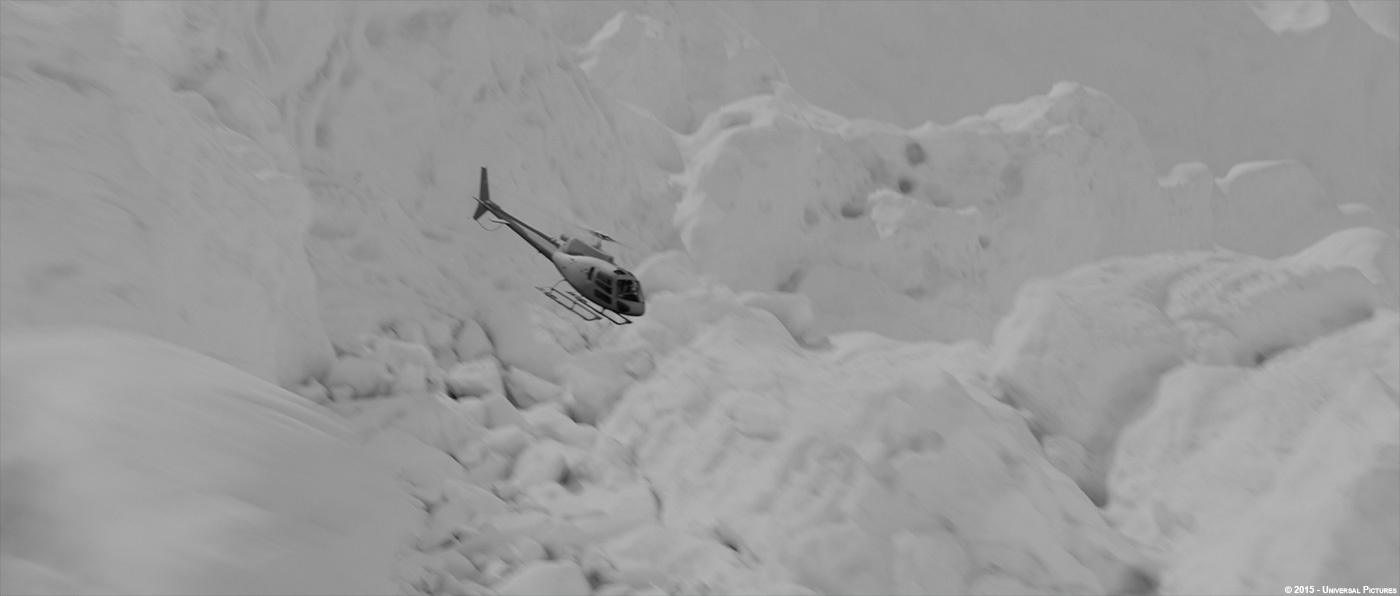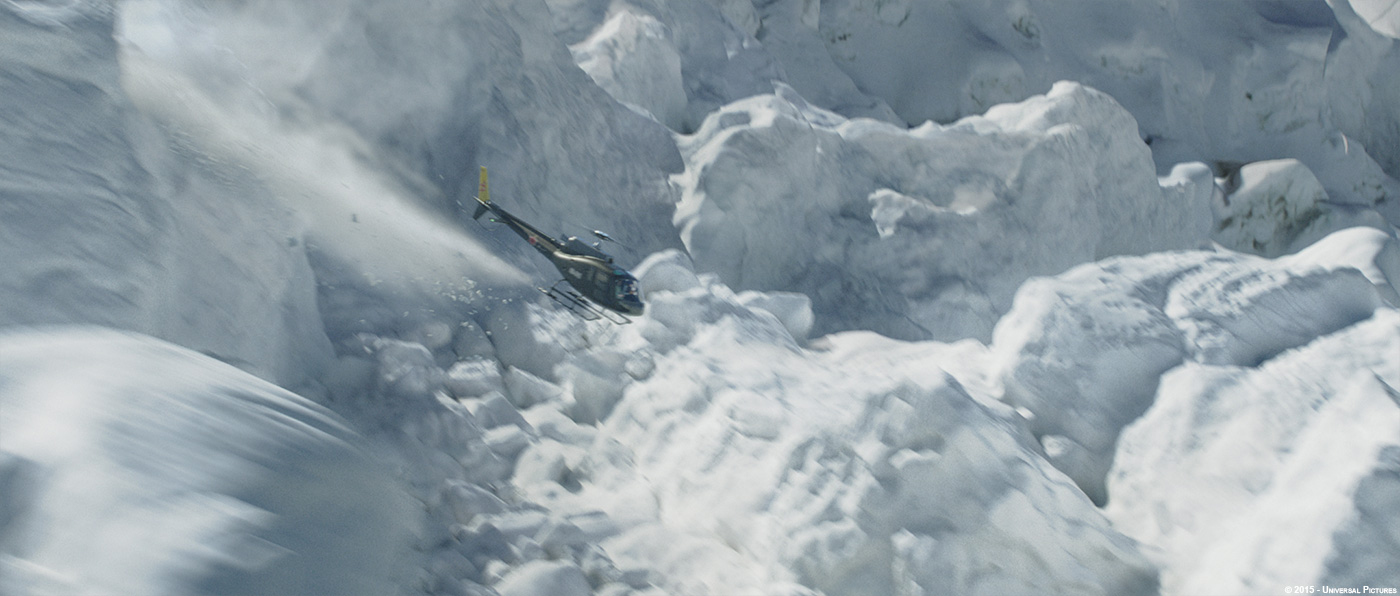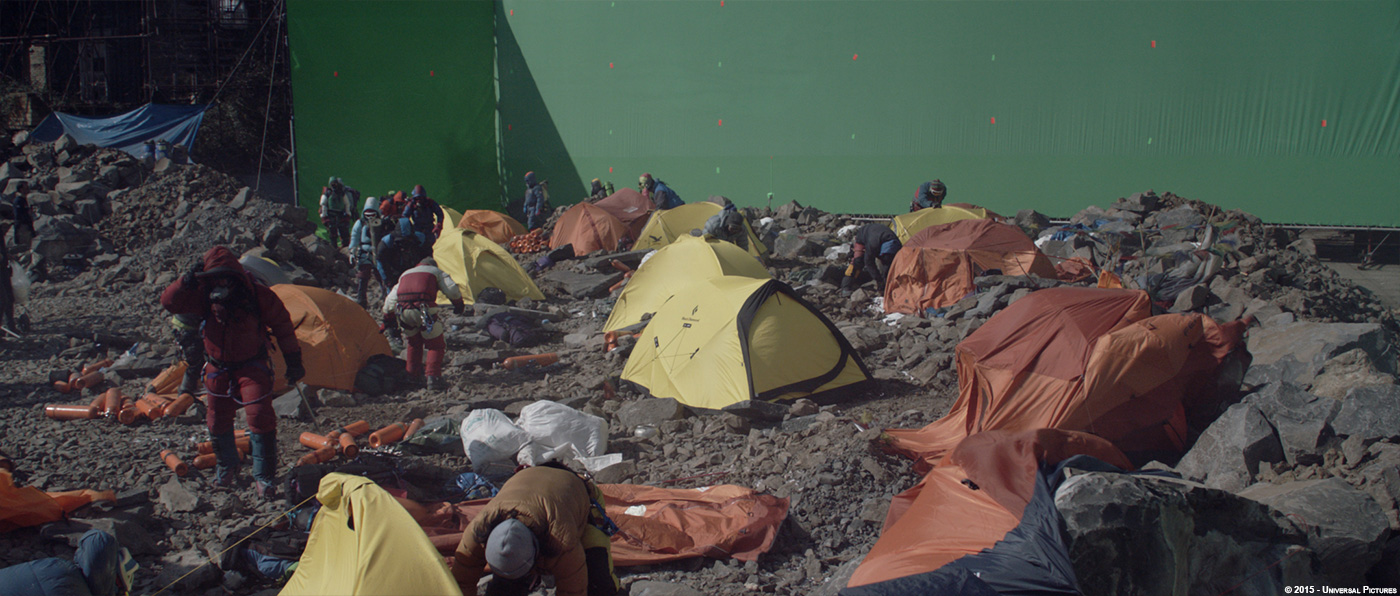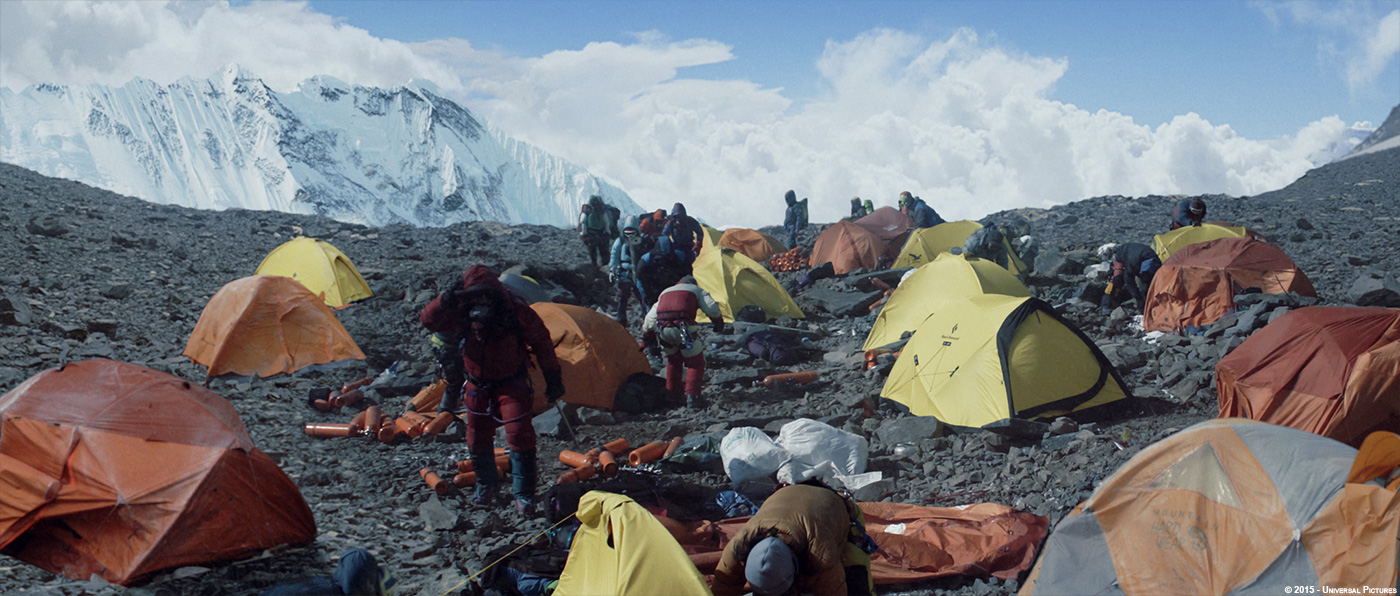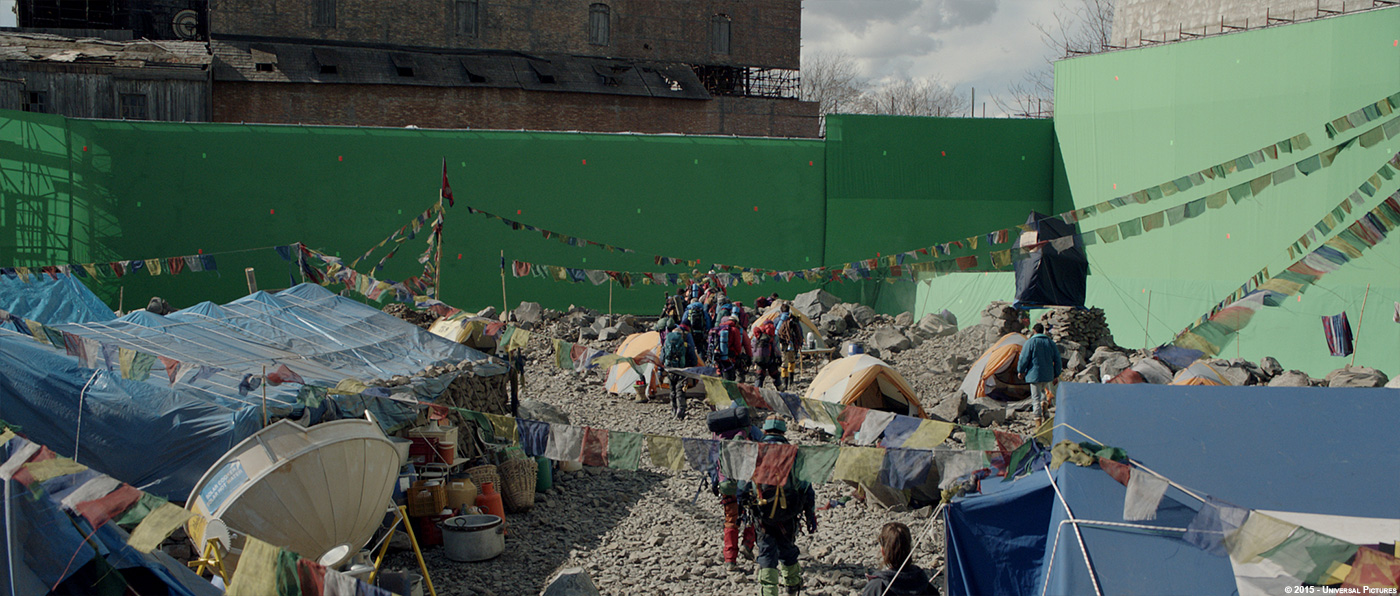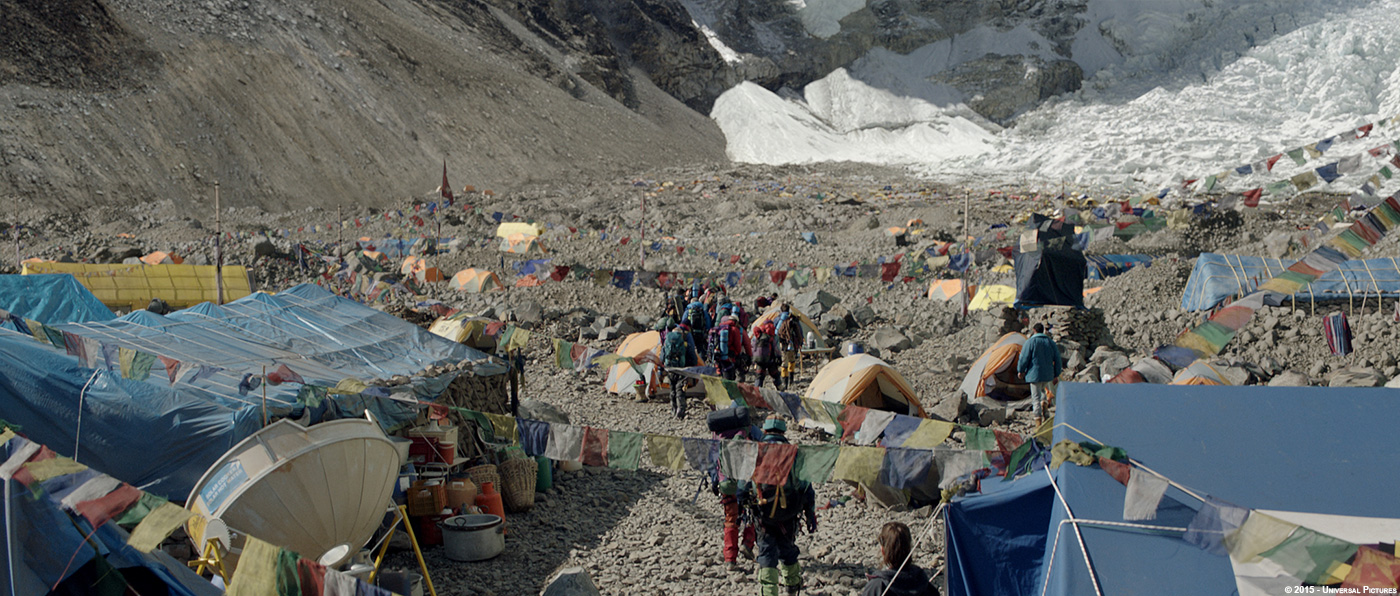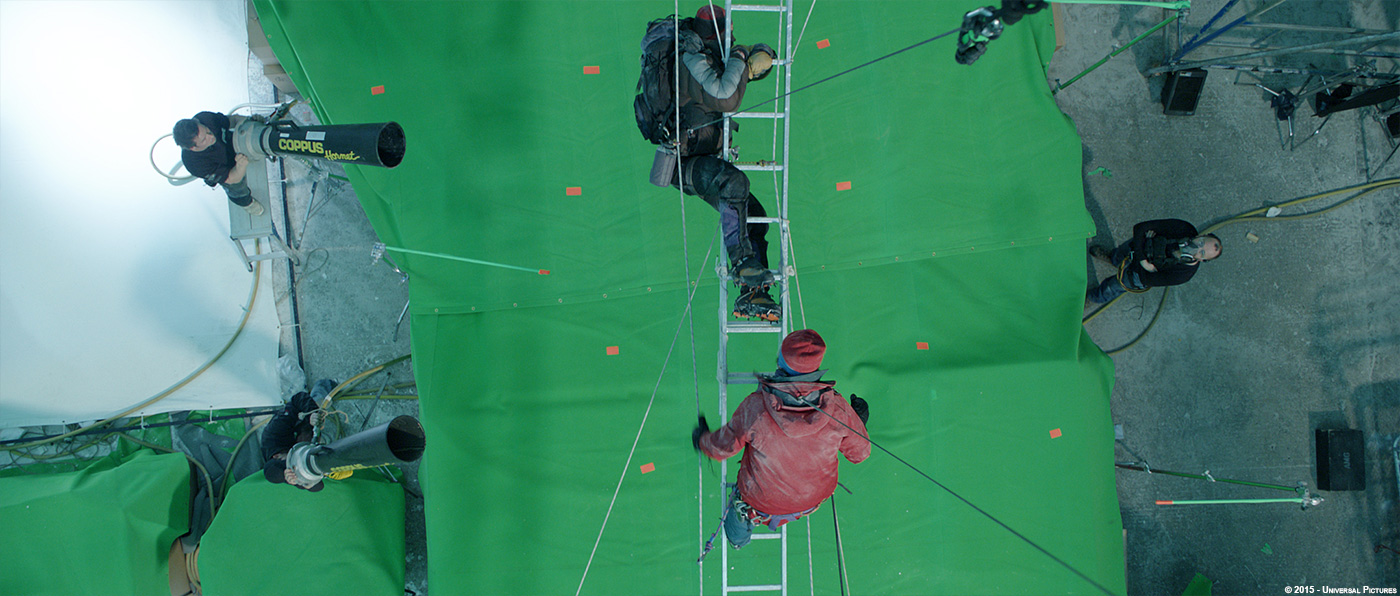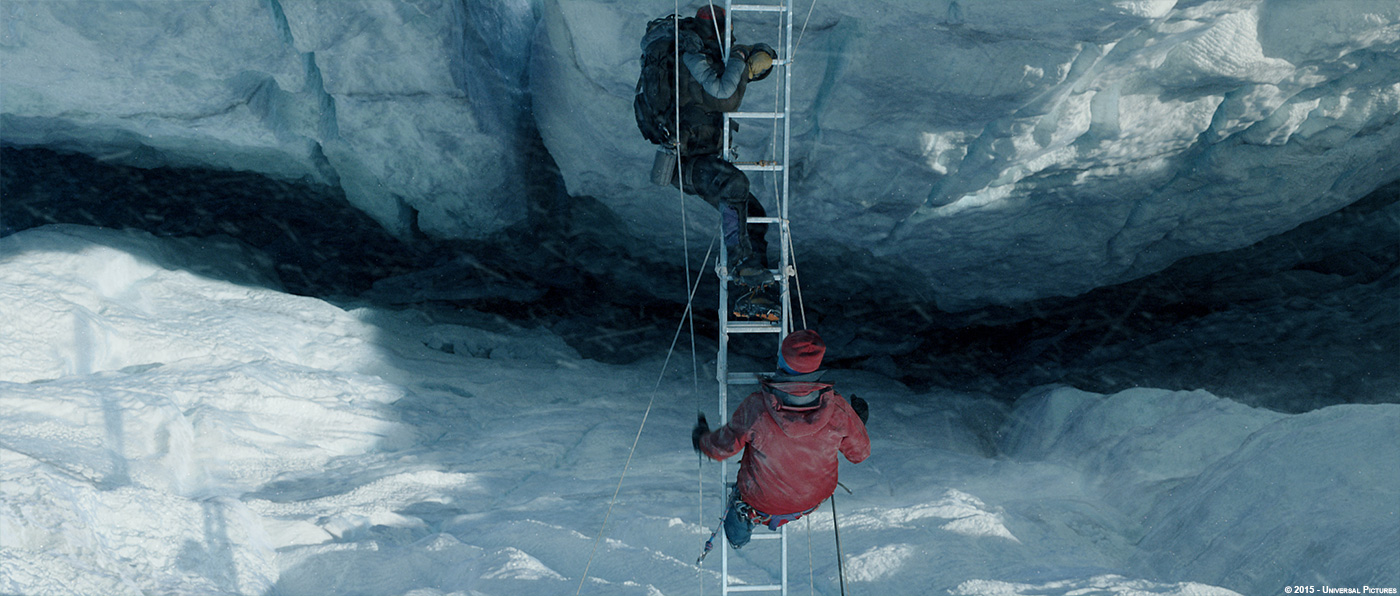During his last visit, Dadi Einarsson talked to us about his work on CONTRABAND. He then worked on films such as THE DEEP, BOARDWALK EMPIRE and GRAVITY. Framestore Reykjavik also became independant and is now called RVX.
Can you tell us more about RVX?
RVX is a VFX and animation studio based in Reykjavik, Iceland. We opened under the name Framestore Reykjavik in 2008 as an outpost of Framestore. In 2012 we became independent and soon thereafter rebranded as RVX. We have fantastic artists and technicians who have worked on around 16 films since opening our doors, in addition to many commercials, promos and games related projects.
That’s your third collaboration with director Baltasar Kormákur. Can you tell us more about that?
Its actually our 4th collaboration. CONTRABAND, THE DEEP, 2 GUNS and now EVEREST. We are currently working on his latest project, TRAPPED, 10 episodes for TV. We formed a strong relationship with him during our fist two projects and shared a desire to grow and build capabilities here in Iceland to tell any kind of story and fully service vfx needs of filmmakers both Icelandic and international. Visual effects are a huge part of modern day film making. Baltasar understood that and wanted to harness its potential.
What was his approach about the visual effects?
He is a very physical director in the sense that he would like nothing more than to shoot on the slopes of Everest, but he knew of course that there were severe limitations to the actual locations we would be able to shoot. We scouted Everest together and came away with a clear idea of what we wanted to convey. We both wanted two fundamental things from the vfx – to be absolutely seamless in principal photography where we are either in a studio or replacing mountain ranges, and secondly to expand the scope of the film with some breathtaking, impossible to get shots. He gives me freedom to develop ideas and show him but ultimately he wants it to look real, be in the style of the rest of the film and help progress the story.
Can you describe to us one of your typical day on-set and then during the post?
On set I would work closely with Arne Kaupang who was our On Set VFX Supervisor and our data team Taylor Tulip-Close and Paul Bongiovanni to lay out methodologies and solve the problems of the day, of which there tended to be numerous. Our Dolomites location for instance was incredibly cold, difficult to get to and basically a very long and hard day’s work, I had the luxury of returning to the studio at regular intervals to keep the ball rolling back home, develop the assets needed for shot execution and work on previz during which time Arne would hold fort on set.
In post it varied a lot. On a good day it would be a couple of hours of dailies and reviews followed by working out some shots in Maya or Nuke and being hands on with the team. Towards the end of the show I would be in dailies from dawn ’til the wee hours.
Can you tell us about the filming of this movie?
We shot on location in Nepal for the beginning journey or trek towards Everest, but once we get to Basecamp we are at the Cinecitta Studios backlot in Rome. From there on up we shot either in Pinewood Studios, Cinecitta or Val Senales in the Dolomites for the Khumbu Icefalls, higher camps and summit.
How did you handle the roto / greenscreen challenge?
It was difficult to get anywhere near the amount of greens we needed in Rome for our Basecamp set but we eventually wrangled enough to cover a medium height strip around most of the perimeter. However due to the large vistas we were trying to create we would often have very difficult parts of the set going above the greens that needed roto work, in particular prayer flags which are translucent and semi transparent. It was a huge amount of extra work for comp lead Henrik Linnet and the basecamp compositing team. Many scenes needed extensive roto work to separate actors from sets which we needed to replace or extend, for instance the Icefalls ladder crossing scene and the Hillary Step traverse.
What was your approach to recreate this huge environment and especially the Everest?
The base methodology was to create a photogrammetry model of the entire region from thousands of photographs. This allowed CG Supervisor Matthias Bjarnason and RVX CG team to build a previz/postviz/layout model so we could accurately compose and stage shots from all scenes in the film that needed a new background. For instance if we shot in Val Senales for Camp 1, we would match move the camera, import it to Maya with the plate as an image plane and place it where Camp 1 actually is on the layout model. We would then move and pan the camera around the area to find the best composition, exactly as you would had you been there with a camera and actors. It really gave us a great tool to be 100% sure our views were correct and as dramatic or informative of the environment as they could possibly be. This layout would then go to editorial so they could get a better sense of the surroundings and value of the shot. Once a shot was approved to be worked on by vfx it would be turned over usually along with either the layout or previz. if we were building a cg environment for the shot our photogrammetry lead Olafur Harladsson would then up-res the geometry using software from Designing Reality and hand over the geo along with Maya cameras with the photographs ready to re-project in Mari. This would then be the base for the CG and DMP team to build environments that matched our foreground and the brief.
How did you reproduce the particular lighting of the Everest thanks to this air with no pollution?
This was really just observing all the reference we had acquired and trying to match it in comp. The thing that is most noticeable are the very deep blue skies, but this is also down to the exposure settings on cameras to capture the very bright snow and ice. I worked closely with RVX with the Icelfalls, Framestore for their Hillary Step shots and One Of Us who did the Summit sequence to try to find the right look. Its difficult because its a delicate balance between finding a look in compositing that leaves room for DI to do its thing but we found a solution that worked and held up nicely in the grade I think. Stefan Sonnenfeld at Company 3 was fantastic to work with and did a really beautiful job on the grade.
What was the best way to render this mountains environment and the various FX?
We used a lot of projected DMP and photography which really gives you, by definition, the most photoreal result. In addition we had a lot of traditional CG geometry rendered in Arnold. The Khumbu Icefalls ladder crossing sequence for instance is basically a fully CG environment modeled in Zbrush and rendered in Arnold through Maya. Compositing Supervisor Sigurjon Gardarson and Lead Compositor Helgi Laxdal set up an icy sparkles approach in Nuke for the ice geo which really helped give us that frosty feel.
On top of everything were almost always multiple layers of spindrift and snow, created using a combination of Houdini and practical elements shot against black. After studying reference we noticed that one of the things that really made the snow drift feel cold were tiny, very bright specs that were not motion blurred like the other streaky snow, Adding these as another layer gave us that icy cold feeling. One of the characteristics of Everest is the big plume of snow that is constantly blowing up from the east. This was also achieved with a combination of Houdini and practical elements.
Another thing that helped the cold feeling was of course ice breath. RVX did most of them using a fluid animation rig in Maya, tracked to the heads and animated to match dialog and wind direction/turbulence. Milk VFX also worked on breath shots using a Houdini set up.
How did you created the digi-doubles of the characters?
Taylor Tulip-Close the supervising data wrangler set up a grey screen tent with Kino Flo lighting. We shot as many of the actors with as many of their costumes as we could get access to and schedules permitted. The really important ones were the summit suits for the high altitude shots which we always knew we would have to create digi doubles for. He would shoot them in T poses and this gave us perfect reference to model and project textures in Zbrush, Maya and Mari.
Can you tell us about your work on the helicopter rescue sequence?
The sequence was shot in the Dolomites. We had found a location that would work for the foreground landing area but it was clear we would need to change all the backgrounds if we wanted to feel authentic. Production VFX Producer Roma O’Connor and I chose Union VFX for the sequence. We turned over to them the photogrammetry model along with all available stills photography and plates we had sourced from amongst others David Breashears who had been a key source of reference.
Union VFX Supervisor Simon Hughes and his team went about match moving the shots, rotoing out the helicopter, replacing the backgrounds with the Icefalls and Himalayan mountains – Lhotse, Everest and Pumori – and adding layers of snowdrift back on top that had to be removed with the backgrounds.
The interiors were shot on a gimbal rig on a green screen stage. Backgrounds for the interior shots were generated by animating a CG camera around the layout model. This gave us the ability to match continuity, create drama and just really be authentic with all those environments. Much more so than had we actually shot those backplates – the level of control we had animating our camera in a CG environment was what allowed us to make the sequence flow and create maximum drama.
RVX then created a fully CG shot of the helicopter skids hitting the icefalls and narrowly making it out into open air.
Many VFX studios worked on this show. How did you the work amongst them?
RVX was the lead VFX studio, setting up the methodology, creating the base mountain asset, handling previz, postviz and layout. RVX did around half of all the shots in the film including Basecamp, The Khumbu Icefalls, Camps 1, 2, 3 & 4 as well as several fully CG helicopter style shots and over 200 cold breath shots. An incredible body of work from an outstanding team.
Framestore, lead by VFX Supervisor Glen Pratt, took on the Balcony and Hillary Step as well as the other fully CG helicopter style shots. They are a great team whom I have always loved working with and their shots were beautiful.
Union handled mainly the helicopter rescue as described above but also did shots of Guy Cotter on Pumori and the Auckland airport sequence. Based in Soho, they were a pleasure to work with and did a great job.
We chose Important Looking Pirates in Stockholm for the white out sequence. Lead by VFX Supervisor Stefan Andersson and Producer Måns Björklund, ILP created the effect using Houdini, Mantra and their in house volumetric renderer Tempest and applied it to over 90 shots. I was really keen to work with ILP and they did a fantastic job.
For the Summit sequence and storm hit we decided to go with One Of Us. I knew them and was keen to get them involved. Lead by VFX Supervisor Dominic Parker and Producer Rachael Penfold, they were a pleasure to work with and their shots came out really well.
Close to the end Milk VFX came on board and worked on some extra ice breath shots. A good team and nice to work with.
How did you organize your team to ensure the consistency of the shots look?
We did so much work on preparation, briefing based on reference material, supplying assets, layout, previz and plates. After that it was just really a case of constant reviews and refining, sharing work in progress between studios to keep people aware of what was happening around them.
What was the biggest challenge on this project and how did you achieve it?
Its very difficult to pinpoint one precise thing, but the biggest challenge was probably lack of background plates for our scenes and needing to be location and geographically accurate with all of our scenery. This we achieved predominantly by building the photogrammetry model of Everest and the surrounding area.
Was there a shot or a sequence that prevented you from sleep?
We were definitely facing huge challenges along the way. Deadlines loomed and things weren’t quite there yet, but you keep at it and then there’s that magical moment when it all pops into place because of all the preparation and hard work. The ladder crossing sequence was a huge amount of work and needed a lot of look development to get the balance of light right. Some of the fully CG helicopter shots were massive amounts of work but blew people away in the end.
What do you keep from this experience?
That completing an enormous project like this is a lot like climbing a mountain. A lot of preparation, then its one step at a time and you just keep on until you reach the summit.
How long have you worked on this film?
Principal photography started in January 2014, so it was about a year and a half of actual production, but I had been scouting since early 2013 and breaking down scripts and bidding since mid 2012. All in all I would say 2 pretty solid years.
How many shots have you done?
The total show was close to 900 shots. RVX did around 400.
What was the size of your team?
RVX were around 50 people on EVEREST.
What is your next project?
We are currently bidding on several shows but our main work right now is called TRAPPED, 10 episodes of TV for Baltasar Kormakur and RVK Studios.
I wanted to highlight the 3D aspect of the work. So you can maybe phrase your question around this answer:
Mark Simone and the Stereo D team did a really great job on the 3d conversion. They were supplied with simplified breakout comps from Nuke including all elements used. Baltasar was keen for the 3d to be predominantly at or beyond screen depth so as not to be intrusive or gimmicky and I think Stereo D nailed it. Its not often that I recommend the 3d over the 2d version of a film but I really thought the 3d added to EVEREST. They were a pleasure to work with.
A big thanks for your time.
// WANT TO KNOW MORE?
– RVX: Dedicated page about EVEREST on RVX website.
© Vincent Frei – The Art of VFX – 2015


